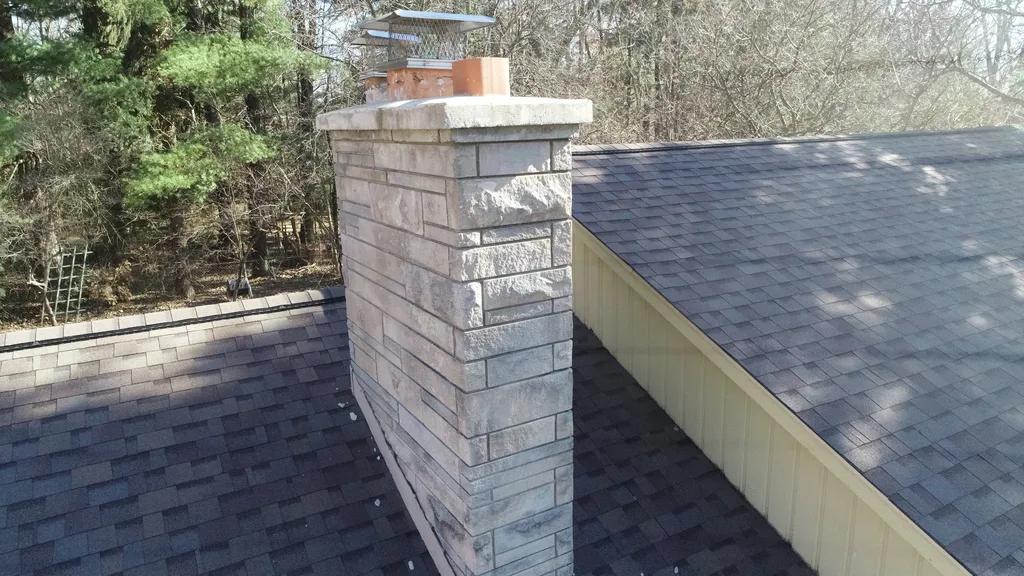Water infiltration in chimney flues can be a common issue faced by homeowners in Indiana, causing potential damage and safety concerns. In this article, we will explore the causes and effects of water infiltration in chimney flues, as well as provide guidance on how to prevent and address this dilemma. Understanding the importance of maintaining a dry and functional chimney flue is essential for ensuring the longevity and safety of your home.
Table of Contents
- Identifying the Source of Water Infiltration in Chimney Flue
- Common Causes of Water Damage in Indiana Chimneys
- Effective Solutions for Preventing Water Infiltration in Chimney Flues
- Importance of Regular Chimney Inspections and Maintenance
- Q&A
- The Way Forward

Identifying the Source of Water Infiltration in Chimney Flue
Water infiltration in chimney flues is a common issue that homeowners in Indiana face, especially during the rainy season. It can lead to various problems such as mold growth, deterioration of the chimney structure, and even water damage to the interior of the house. Identifying the source of water infiltration is crucial in order to address the issue effectively and prevent further damage.
There are several potential sources of water infiltration in chimney flues, including:
- Cracked chimney crown
- Deteriorated mortar joints
- Missing or damaged chimney cap
- Flashing leaks

Common Causes of Water Damage in Indiana Chimneys
Water infiltration in chimney flues is a common issue that many homeowners in Indiana face. This dilemma can lead to costly repairs and extensive damage if not addressed promptly. There are several that homeowners should be aware of:
- Missing or damaged chimney caps: Chimney caps are designed to prevent water from entering the flue. When caps are missing or damaged, water can easily seep into the chimney.
- Cracked chimney crowns: The chimney crown is the top part of the chimney that helps protect the masonry from water damage. Cracks in the crown can allow water to penetrate the chimney structure.
- Improper flashing: Flashing is the sealant around the base of the chimney where it meets the roof. If the flashing is improperly installed or damaged, water can leak into the chimney.
It is essential for homeowners to regularly inspect their chimneys for signs of water damage and address any issues promptly to prevent further damage. By understanding the common causes of water infiltration in chimney flues, homeowners can take proactive steps to protect their chimney and prevent costly repairs down the road.

Effective Solutions for Preventing Water Infiltration in Chimney Flues
Water infiltration in chimney flues can be a common issue for homeowners in Indiana, especially during the rainy season. This problem can lead to costly repairs and structural damage if not addressed promptly. Thankfully, there are effective solutions available to prevent water infiltration and protect your chimney from damage.
One solution is to install a chimney cap, which is a protective covering that sits on top of the chimney flue. This cap prevents water from entering the flue while still allowing smoke to escape. Additionally, waterproofing the chimney with a high-quality chimney sealant can help create a barrier against water infiltration. Regular chimney inspections and maintenance are also crucial in identifying and fixing any potential issues before they escalate.

Importance of Regular Chimney Inspections and Maintenance
Regular chimney inspections and maintenance are essential for keeping your chimney functioning properly and safely. One common issue that can arise if a chimney is not properly maintained is water infiltration in the chimney flue. This is a significant problem in Indiana, where the weather can be unpredictable and severe.
Water infiltration can cause a range of issues, including rust, deterioration of the chimney liner, and even structural damage to your home. By having regular inspections and maintenance performed on your chimney, you can prevent water infiltration and ensure that your chimney is in good working condition. This will not only protect your home and chimney but also help to maintain the value of your property in the long run.
Q&A
Q: What causes water infiltration in chimney flues?
A: Water infiltration in chimney flues can be caused by a number of factors, including deteriorating mortar joints, cracked or damaged flue liners, and improper chimney cap installation.
Q: How does water infiltration affect chimney flues?
A: Water infiltration can lead to a number of serious issues, including rusting metal components, deteriorating mortar, damaged flue liners, and even structural damage to the chimney itself.
Q: What are the signs of water infiltration in chimney flues?
A: Signs of water infiltration in chimney flues can include water stains on the interior walls of the chimney, musty odors, rusting metal components, and even water pooling at the base of the chimney.
Q: How can water infiltration in chimney flues be prevented?
A: Water infiltration in chimney flues can be prevented by regularly inspecting and maintaining the chimney, ensuring that the chimney cap is properly installed, and taking steps to protect the chimney from water damage.
Q: What are the potential risks of ignoring water infiltration in chimney flues?
A: Ignoring water infiltration in chimney flues can lead to a variety of issues, including chimney fires, carbon monoxide poisoning, and even structural damage to the home. It is important to address water infiltration issues promptly to prevent these risks.
The Way Forward
In conclusion, water infiltration in chimney flues poses a common yet significant concern for homeowners in Indiana. It is crucial to address this issue promptly to prevent further damage and ensure the safety and functionality of your chimney. By staying vigilant and implementing necessary preventative measures, such as regular inspections and maintenance, you can protect your home from the potential dangers associated with water infiltration. If you suspect water is infiltrating your chimney flue, it is recommended to seek professional assistance from a certified chimney sweep or contractor. By taking proactive steps to address water infiltration, you can safeguard your home and enjoy a safe and efficient fireplace for years to come.


